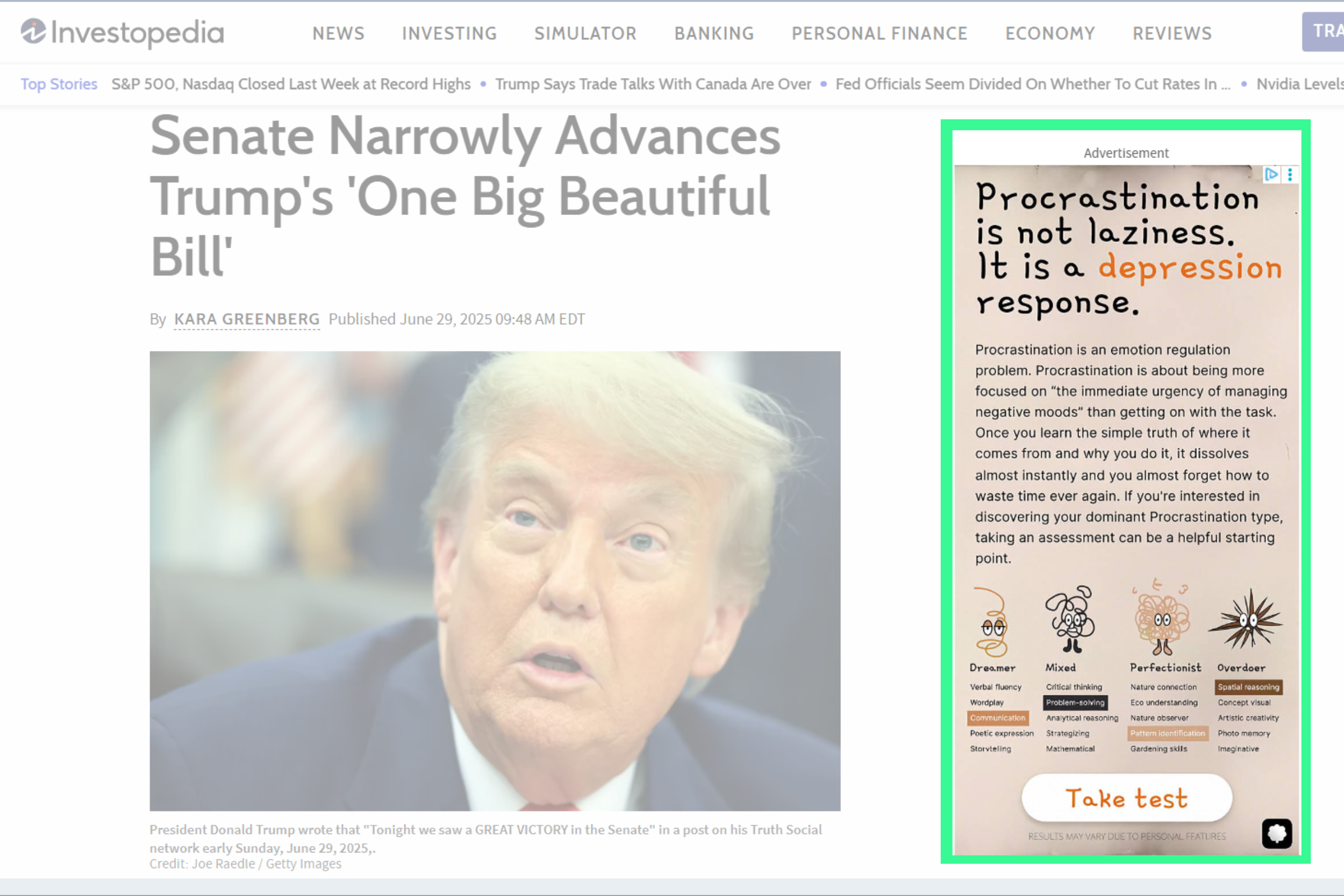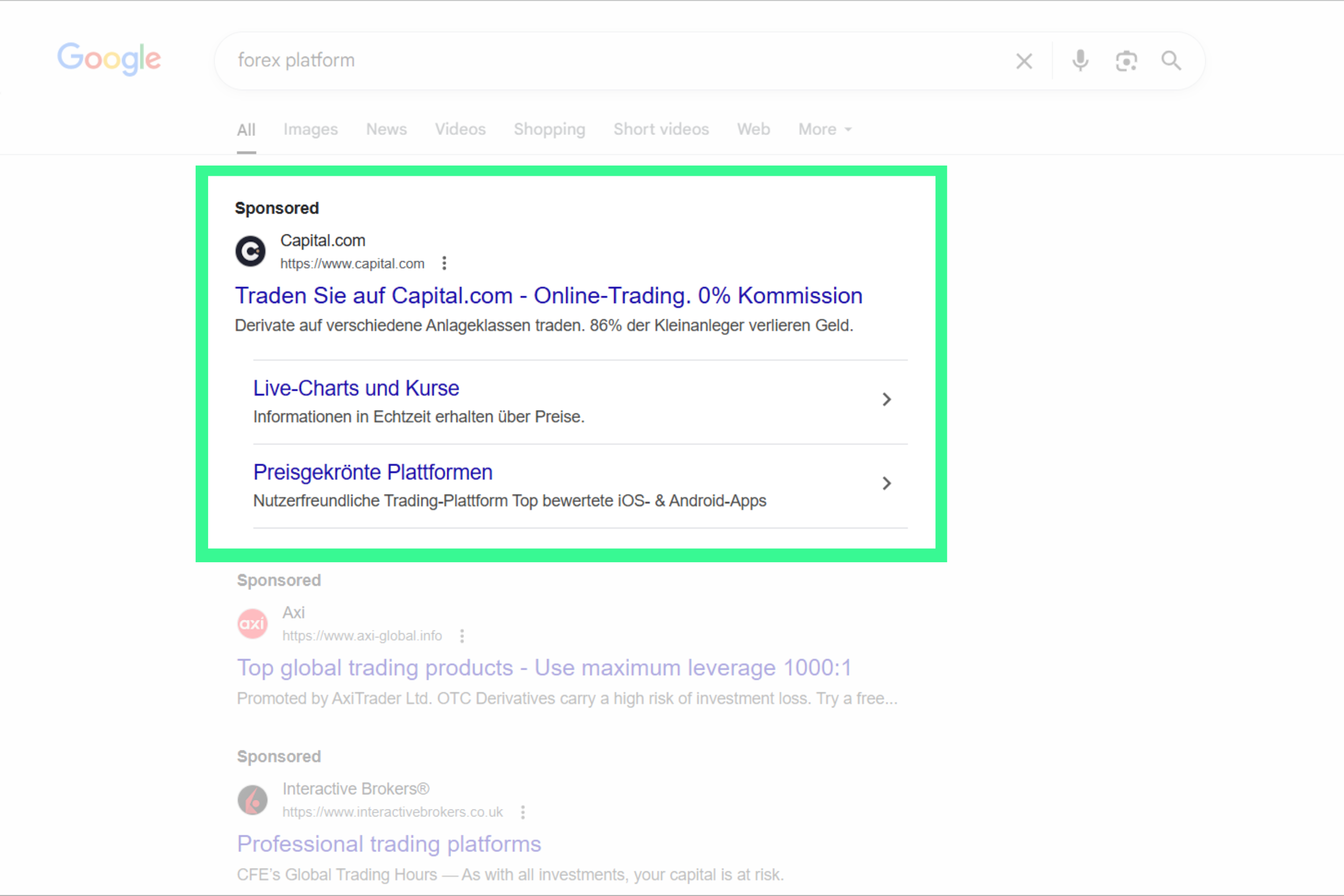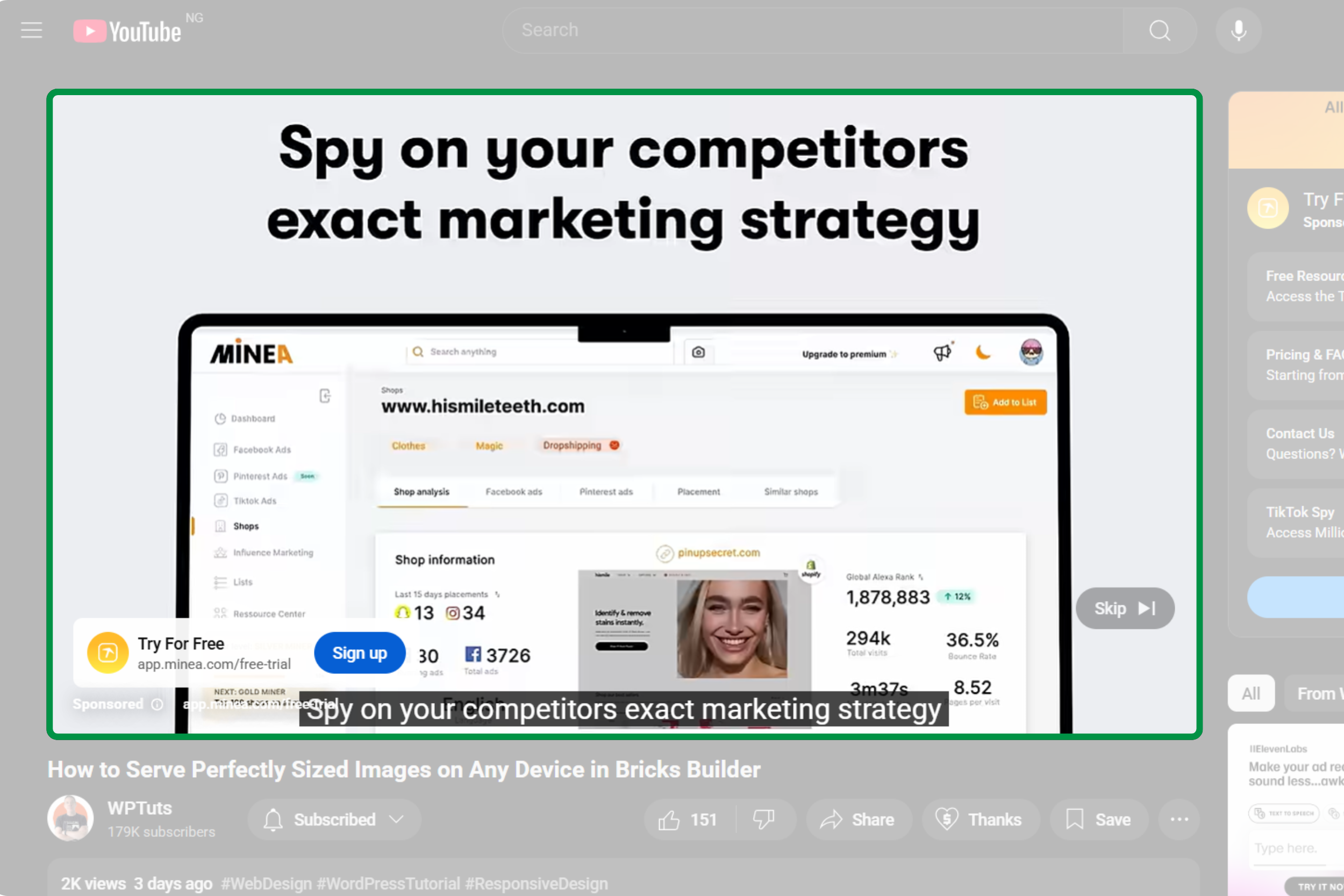10 основных типов цифровой рекламы
- Cointelegraph Formula предлагает различные форматы рекламы 8 миллионам читателей в месяц в более чем 190 странах, используя свое надежное имя в сфере криптовалют.
Цифровая реклама существует во множестве форм. Представляем 10 основных типов онлайн-рекламы, которые используются для взаимодействия с аудиторией и повышения узнаваемости бренда.
- Медийная реклама
- Поисковая реклама
- Реклама в социальных сетях
- Видеореклама
- Нативная реклама
- Реклама в приложениях
- CTV реклама (Connected TV)
- Партнёрская реклама
- Email-реклама
- Аудиореклама
Типы рекламы демонстрируют эволюцию цифрового маркетинга. Современная реклама адаптируется к новым медиаформатам и изменяющимся привычкам аудитории. В 2025 году цифровая реклама доминирует в мировых рекламных расходах, составляя более 75% от общего объёма рекламного рынка в $1,8 трлн.
Новичкам рекомендуем ознакомиться с нашим руководством по цифровой рекламе, чтобы понять принципы работы и преимущества. Цифровая реклама — это любые рекламные материалы, созданные на онлайн-платформах для продвижения товаров и услуг.
Рассмотрим каждый тип онлайн-рекламы подробно.
1. Медийная реклама
Медийная реклама, также известная как баннерная реклама, содержит изображения, текст и иногда анимацию (rich media). Размещается в виде визуальных баннеров на веб-сайтах, в блогах и мобильных приложениях:

Данные объявления продаются через платформы наподобие Blockchain-Ads и Google Display Network.
Баннерная реклама представлена различными форматами, наиболее популярные размеры:
- 300x250
- 728x90
- 160x600
Подробнее о форматах медийной рекламы и их характеристиках — в нашем соответствующем материале.
Отдельный тип медийной рекламы — rich media объявления. Данный формат добавляет интерактивности в медийные кампании, делая их более привлекательными по сравнению со статичными баннерами.
Rich media форматы включают:
- Всплывающие или floating-объявления
- Видеореклама в баннерах
- Межстраничная реклама
- Расширяемые баннеры
Примером может служить медийная реклама, которая расширяется при наведении курсора, позволяя пользователям взаимодействовать с контентом без перехода на другую страницу.
2. Поисковая реклама
Поисковая реклама — это платные объявления, отображаемые в верхней или нижней части страниц результатов поисковых систем (SERP) при пользовательских запросах.
Поисковые объявления таргетируются на конкретные ключевые слова и обычно имеют текстовый формат:

Поисковая реклама функционирует через систему аукционов, где рекламодатели делают ставки на высокоинтентные запросы. Это обеспечивает высокую релевантность объявлений, поскольку они показываются пользователям в момент наибольшей заинтересованности.
Помимо текстовых объявлений, поисковая реклама включает:
- Адаптивные поисковые объявления
- Динамические поисковые объявления
- Объявления только с телефонным номером
- Discovery-объявления
- Торговые объявления (shopping ads)
Поисковую рекламу можно запускать через Google Ads и Microsoft Advertising. Наше руководство по поисковой рекламе содержит подробное объяснение принципов работы данного типа цифровой рекламы.
3. Реклама в социальных сетях
Реклама в социальных сетях — это платный контент, отображаемый в лентах пользователей, сторис или специальных разделах социальных платформ. Таргетируется на определённые аудитории на основе демографических данных, интересов и поведения:

Реклама в социальных сетях представлена различными форматами: текстовые посты, изображения, карусели, видео или интерактивные объявления.
Как правило, данный тип цифровой рекламы сопровождается пометкой «Реклама» или «Спонсируется», при этом органично вписываясь в контент платформы и имея нативный характер.
Социальная реклама эффективна для повышения узнаваемости бренда, поскольку пользователи могут открывать новые продукты непосредственно в своих лентах. Наш материал о рекламе в социальных сетях даёт чёткое представление об этом типе цифровой рекламы и методах её реализации.
4. Видеореклама
Видеореклама — это короткие промо-ролики, создаваемые компаниями для рекламы товаров или услуг. Цель — привлечь внимание и мотивировать к покупке или изучению бренда.
Видеореклама встречается повсеместно: перед роликами на YouTube, в социальных сетях Instagram и TikTok, на веб-сайтах и даже в мобильных играх. Продолжительность варьируется от нескольких секунд до пары минут.
Видеореклама сочетает визуальные эффекты, звук, музыку и иногда текст для рассказа истории или демонстрации продукта. Обычно более вовлекающая по сравнению с графической рекламой, поскольку может показать товар в действии, рассказать историю или использовать юмор и эмоции для контакта с аудиторией.
Видеореклама включает множество типов: in-stream, out-stream, нативную и rewarded-рекламу. Также существует реклама в социальных сетях, shoppable-видео, видеообъявления в результатах поиска и OTT-реклама.
Два основных подхода:
- In-stream
- Out-stream
In-stream реклама воспроизводится внутри видеоконтента. Вы наверняка видели такую рекламу на YouTube и стриминговых платформах Hulu, Netflix. Это ролики, появляющиеся до, во время или после выбранного видео.
Ролики перед контентом называются pre-roll рекламой. Появляющиеся посередине — mid-roll (для длинных видео). Post-roll реклама показывается в конце. Пример in-stream видеорекламы:

Out-stream реклама — это видеоролики, появляющиеся в неожиданных местах: посреди статьи или при скроллинге блога. Не зависят от другого видео для размещения. Запускаются через рекламные платформы вроде Blockchain-Ads. Пример:

Автовоспроизводятся без звука, привлекая внимание без нарушения пользовательского опыта. При клике или наведении курсора включается звук.
5. Нативная реклама
Нативная реклама — распространённый тип цифровой рекламы, органично встраивающийся в контент платформы, соответствуя её внешнему виду, стилю и назначению.
Нативная реклама размещается на веб-сайтах, в приложениях, результатах поиска и лентах социальных сетей. Обычно помечается как «Спонсируется» или «Реклама», но выглядит как обычный контент.
Три основных формата нативной рекламы:
- In-feed нативная реклама
- Спонсорские статьи
- Виджеты рекомендаций контента
In-feed реклама — один из наиболее популярных типов нативной рекламы. Размещается непосредственно в лентах социальных сетей или новостных сайтах, выглядя практически идентично обычным постам или статьям. Органично вписывается в контент, не создавая ощущения навязчивой рекламы.
Другой популярный формат — спонсорская статья, также известная как branded content. Развёрнутые материалы на авторитетных издательских сайтах, написанные для предоставления инсайтов или рассказа истории, связанной с брендом.
Третий тип — виджеты рекомендаций или блоки «Похожие материалы». Часто появляются в конце статей с цепляющими заголовками, мотивирующими к переходу.
Наше руководство по нативной рекламе содержит подробное объяснение данного типа цифровой рекламы.
6. Реклама в приложениях
In-app реклама становится всё более популярной, позволяя компаниям взаимодействовать с пользователями в местах наибольшего времяпрепровождения — мобильных приложениях. Данный тип рекламы эффективен для казуальных игр, стриминговых приложений и других мобильных продуктов.
Различные рекламные форматы в приложениях, наиболее эффективные типы:
- Интерстициальная реклама
- Rewarded video реклама
- Playable реклама
Интерстициальная реклама появляется во время естественных пауз: завершения игрового уровня или переключения между разделами. Кратковременно занимает весь экран мобильного устройства, показывая кнопку закрытия после короткого обратного отсчёта.
Rewarded video реклама использует иной подход. Пользователям предлагается просмотр короткого видео в обмен на вознаграждение. В игровых приложениях это может быть дополнительная жизнь или бонусные монеты. Формат успешен благодаря добровольному участию пользователей, понимающих взаимную выгоду.
Playable реклама — интерактивные превью, особенно распространённые в мобильном гейминге. Позволяют пользователям попробовать упрощённую версию приложения перед установкой. Вместо простого просмотра промо-ролика пользователи получают практический опыт. Это часто приводит к более качественным установкам и большей лояльности игроков.
7. CTV реклама (Connected TV)
CTV реклама — это видеокоммерческие ролики для телевизоров, подключённых к интернету через стриминговые платформы Netflix, Hulu, YouTube TV или Roku. Объявления показываются до, во время или после потокового контента, подобно традиционным телевизионным коммерческим роликам.
Отличие в том, что доставка происходит через интернет, а не кабельные или спутниковые сигналы. Рекламодатели получают возможность более точного таргетинга на определённые аудитории. Например, показ рекламы спортивного снаряжения людям, часто просматривающим спортивный контент.
CTV реклама набирает популярность по мере отказа людей от кабельного телевидения: в 2023 году 88% американских домохозяйств владели как минимум одним интернет-подключённым ТВ-устройством. Расходы на CTV рекламу выросли почти на 400% с 2019 года, демонстрируя стремительное развитие данного рекламного формата.
8. Партнёрская реклама
Партнёрская реклама — это экономически эффективный промо-контент, создаваемый партнёрами (аффилиатами). Они зарабатывают, продвигая товары или услуги других компаний. При переходе по партнёрской ссылке и совершении покупки аффилиат получает комиссию, обычно процент от продажи.
Партнёрская реклама встречается в блогах, YouTube-роликах, социальных сетях и обзорных сайтах. Например, технический блогер может написать обзор нового смартфона с специальными покупательскими ссылками. При переходе по ссылке и покупке устройства блогер получает вознаграждение от продажи.
Такие объявления часто выглядят как обычный контент, но должны содержать уведомления типа «Реклама», «Партнёрская ссылка» или «Возможно получение комиссии».
В нашем руководстве по партнёрской рекламе объясняется, почему данный маркетинговый подход взаимовыгоден:
- Компании привлекают больше клиентов через доверенных инфлюенсеров и контент-мейкеров
- Партнёры зарабатывают, рекомендуя продукты, которые действительно используют или которым доверяют
Партнёрская реклама может быть простыми текстовыми ссылками, баннерными изображениями, полными обзорами продуктов или unboxing-видео, часто больше напоминающими развлекательный контент, чем традиционную рекламу.
9. Email-реклама
Email-реклама — промо-сообщения, поступающие людям непосредственно в почтовые ящики. Существует два основных типа. Первый — баннерная реклама в почтовых платформах Gmail или Yahoo, выглядящая как небольшие объявления рядом с обычными письмами, аналогично веб-рекламе.
Второй тип включает отправку рекламного контента людям, подписавшимся на его получение. Сюда входят промо-рассылки от компаний, демонстрирующие продукты или акции, а также спонсируемый контент в подписных newsletters. Например, еженедельный tech-дайджест со спонсорским разделом, рекламирующим релевантный продукт.
Оба типа требуют permission-based маркетинга — люди должны согласиться получать рекламные письма или использовать платформы с чёткой демонстрацией рекламы. Подробности работы email-рекламы — в нашем соответствующем материале.
10. Аудиореклама
Аудиореклама — тип цифровой рекламы, таргетированный на слушателей подкастов, музыкальных стриминговых сервисов и интернет-радио.
Стриминговые платформы и подкасты превратили аудио в мощный инструмент storytelling, помогающий запоминанию продуктов и укреплению брендов. Такая реклама органично встраивается в прослушиваемый контент, обычно в виде коротких voice-over или спонсорских сообщений.
Два ключевых формата аудиорекламы:
- Подкаст-реклама
- Реклама в музыкальных стримах
Подкаст-реклама встраивается в начало, середину или конец эпизодов (pre-roll, mid-roll, post-roll соответственно). Некоторые добавляются на основе профиля слушателя, другие читаются ведущим, создавая личный и искренний тон.
Реклама в музыкальных стримах встречается на Spotify, Pandora, Audiomack — короткие аудиообъявления между песнями для пользователей бесплатных планов. Обычно длятся 15-30 секунд и часто сопровождаются кликабельным визуальным баннером на экране, создавая двуформатную рекламу: слышимую и видимую, повышающую вероятность взаимодействия.
Выбор подходящего типа цифровой рекламы для повышения узнаваемости бренда
Для повышения узнаваемости бренда и достижения отличных результатов выбирайте цифровую рекламу, соответствующую целям, аудитории и бюджету. Три ключевых фактора для рассмотрения:
- Целевая аудитория: Где она проводит время онлайн?
- Бюджет: Некоторые типы рекламы дороже других
- Цели: Стремитесь к узнаваемости бренда, лидогенерации или продажам?
Ключевые факторы выбора стратегии цифровой рекламы:
- Изучите аудиторию: Понимание привычек и предпочтений клиентов критично для онлайн-успеха. Молодая аудитория лучше откликается на рекламу в TikTok и Instagram. Профессионалы предпочитают LinkedIn-кампании и email-рассылки.
- Определите цели кампании: Чётко сформулируйте желаемые результаты рекламы. Для повышения узнаваемости бренда используйте медийную, видео или CTV рекламу. Для быстрых продаж и немедленных результатов — ретаргетинговую медийную, поисковую рекламу или партнёрский маркетинг.
- Учитывайте бюджет: Различные типы рекламы имеют разную экономическую эффективность. Программатик медийная реклама эффективна и может охватить множество людей. Инфлюенсер-маркетинг требует больших инвестиций, но обеспечивает лучшее взаимодействие и подлинные связи с аудиторией.
- Сопоставляйте контент с типом рекламы: Природа продукта или услуги должна определять рекламный формат. Сложные продукты требуют подробных объяснений в видео или нативной рекламе. Простые товары эффективны в статичной медийной рекламе или соцсетевых постах.
- Выбирайте платформо-ориентированные форматы: Разные продукты лучше работают на определённых платформах и типах рекламы. Визуально привлекательные товары (мода, домашний декор) успешны на image-driven платформах с социальной рекламой. B2B услуги часто преуспевают через поисковую рекламу или профессиональные email-кампании.
Комбинирование различных типов цифровой рекламы создаёт более сильную стратегию, взаимодействуя с людьми на разных этапах клиентского пути. Например, используйте медийную рекламу для привлечения внимания яркими визуалами, затем нативную рекламу, встроенную в контент, для построения доверия и стимулирования вовлечённости.
Платформы вроде Blockchain-Ads позволяют запускать различные типы рекламы одновременно, предлагая программатический подход к рекламе для охвата высокорелевантных аудиторий множественными форматами.
Где размещать данные типы цифровой рекламы?
Сегодня большинство типов рекламы можно размещать на различных онлайн-платформах. Понимание размещения объявлений может значительно повлиять на результаты.
Доступны поисковые системы Google и Bing, социальные сети Facebook, Instagram, X (ранее Twitter) и LinkedIn.
Также доступны видеоплатформы YouTube и ecommerce-сайты Amazon. Можно использовать сети медийной рекламы и Connected TV (CTV) рекламу.
Наше руководство по лучшим цифровым рекламным платформам предлагает полный обзор каждой платформы и её преимуществ.
Поговорите с некоторыми из наших текущих партнеров
Смотреть все истории успеха

Достигните более 12 млн
Привлек пользователей Web3 на более чем 10 000 сайтах и 37 блокчейнах.






.avif)
.png)





